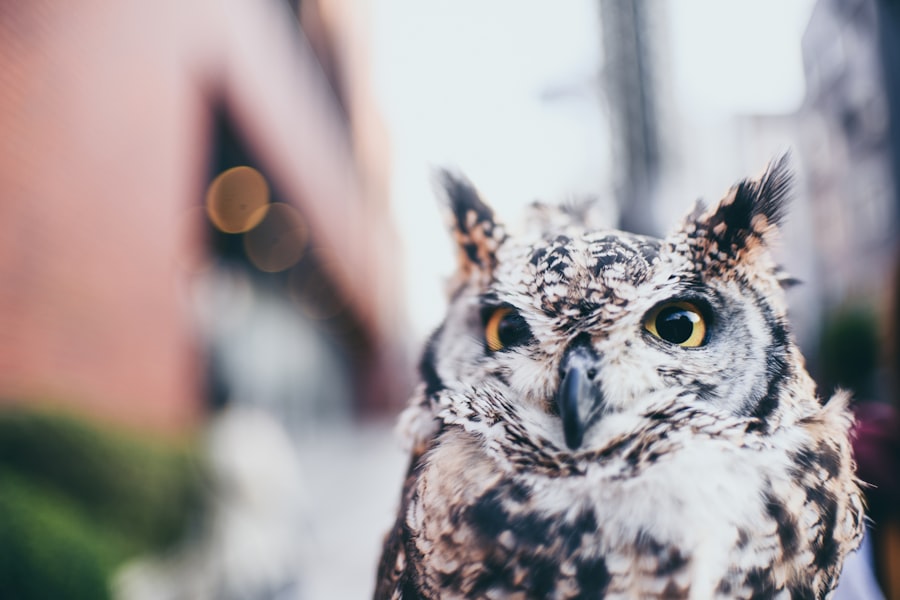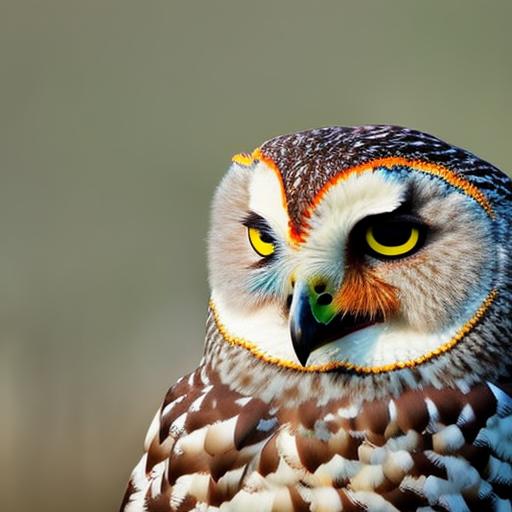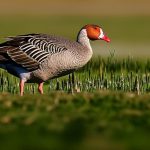Geese can be a nuisance in public spaces, leaving behind droppings and causing potential safety hazards. Their presence can make it difficult for people to enjoy parks, gardens, and other outdoor areas. Traditional methods of deterring geese, such as physical barriers or chemical repellents, can be expensive and harmful to the environment. As a result, many people are turning to alternative methods to keep geese away.
Key Takeaways
- Fake owls are commonly used as a deterrent for geese.
- Fake owls work by mimicking a predator and scaring geese away.
- Fake owls can be effective in keeping geese away, but their effectiveness may vary.
- Other methods for keeping geese away include physical barriers and habitat modification.
- Consistency in deterrent methods is important for long-term success.
The Use of Fake Owls as a Deterrent
Fake owls have become a popular alternative to traditional methods of deterring geese. They are affordable, easy to install, and environmentally friendly. Fake owls are often made of plastic or rubber and are designed to look like real owls. They can be placed in areas where geese are likely to congregate, such as near bodies of water or on lawns.
How Do Fake Owls Work?
Fake owls work by mimicking the presence of a predator in the area. Geese are naturally afraid of predators, so the sight of a fake owl can be enough to keep them away. The owl’s realistic appearance and movement can create the illusion that it is a real threat. This can deter geese from landing or nesting in the area.
The Effectiveness of Fake Owls in Keeping Geese Away
Fake owls have been shown to be effective in deterring geese in many cases. They are particularly effective in small areas, such as gardens or patios. The presence of a fake owl can create a sense of fear and unease for geese, making them less likely to stay in the area. In addition, fake owls are affordable and easy to install, making them a convenient option for homeowners and property managers.
The Limitations of Fake Owls as a Deterrent
While fake owls can be effective in some situations, they may not be as effective in larger areas, such as parks or golf courses. Geese may become accustomed to the presence of a fake owl over time, reducing its effectiveness. In addition, fake owls may not be effective against all types of geese. Some geese may be more aggressive or less easily deterred by visual cues.
Other Methods for Keeping Geese Away

In addition to fake owls, there are other methods for deterring geese. These include noise makers, visual deterrents, and habitat modification. Noise makers, such as air horns or bird distress calls, can startle geese and make them uncomfortable. Visual deterrents, such as scarecrows or reflective tape, can create a sense of unease for geese. Habitat modification involves altering the environment to make it less attractive to geese, such as removing food sources or changing the landscape.
The Importance of Consistency in Deterrent Methods
Consistency is key when it comes to deterring geese. It is important to use the same method consistently over time to ensure its effectiveness. This means regularly maintaining and moving fake owls, noise makers, or other deterrents. Geese can quickly adapt to changes in their environment, so it is important to stay one step ahead and keep them on their toes.
The Cost and Maintenance of Fake Owls
One of the advantages of using fake owls as a deterrent is that they are relatively inexpensive and require little maintenance. Once installed, they can be left in place for extended periods of time without much upkeep. However, they may need to be moved periodically to maintain their effectiveness. Geese can become accustomed to the presence of a fake owl if it remains in the same location for too long.
How to Properly Use Fake Owls to Deter Geese
To properly use fake owls to deter geese, it is important to place them in areas where geese are likely to congregate. This could be near bodies of water, on lawns, or in gardens. The fake owls should be positioned in a way that makes them visible to geese and creates the illusion of a predator. It is also important to periodically move the fake owls to different locations to prevent geese from becoming accustomed to their presence.
Weighing the Pros and Cons of Fake Owls as a Deterrent
In conclusion, fake owls can be an effective and affordable method for deterring geese in small areas. They create the illusion of a predator, which can scare geese away and prevent them from causing damage or creating safety hazards. However, fake owls may not be as effective in larger areas and may require consistent maintenance to remain effective. It is important to weigh the pros and cons of using fake owls as a deterrent and consider other methods if necessary. Ultimately, the goal is to create a safe and enjoyable outdoor environment for everyone.
If you’re looking for effective ways to keep geese away from your property, you may have come across the idea of using fake owls as a deterrent. While this method is commonly suggested, it’s important to understand its effectiveness and limitations. In a related article on Poultry Wizard, you can learn more about whether fake owls truly keep geese away and discover alternative strategies for goose control. Check out the article here to gain valuable insights into managing geese and other poultry-related topics.
Meet Walter, the feathered-friend fanatic of Florida! Nestled in the sunshine state, Walter struts through life with his feathered companions, clucking his way to happiness. With a coop that’s fancier than a five-star hotel, he’s the Don Juan of the chicken world. When he’s not teaching his hens to do the cha-cha, you’ll find him in a heated debate with his prized rooster, Sir Clucks-a-Lot. Walter’s poultry passion is no yolk; he’s the sunny-side-up guy you never knew you needed in your flock of friends!







